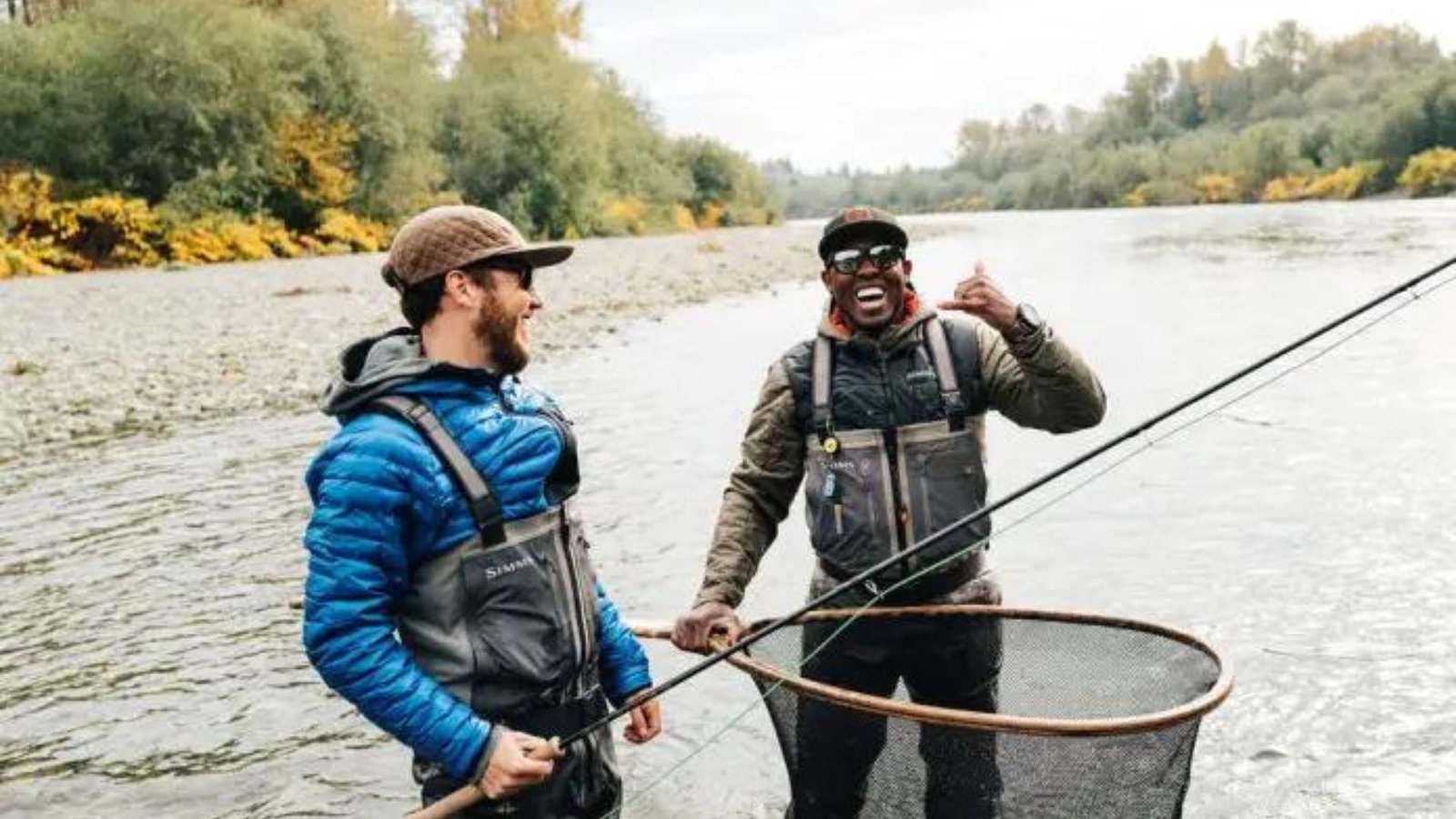Tying your salmon flies can be a rewarding and enjoyable aspect of fly fishing. It allows you to customize patterns to suit specific fishing conditions and your preferences. However, to get started, you need the right materials and tools. Here are some of the best materials and tools for tying salmon flies.

Best Salmon Fly Tying Materials and Tools
Essential Tools for Salmon Fly Tying
Having the right tools is crucial for tying effective salmon flies. Here are some must-have tools for every fly tyer:
-
Fly Tying Vise
- Why It’s Important: A good vise holds the hook securely in place, allowing you to tie materials with precision.
- Top Picks: Renzetti Traveler, Peak Rotary Vise
-
Scissors
- Why It’s Important: Sharp, fine-tipped scissors are essential for cutting materials precisely.
- Top Picks: Dr. Slick Razor Scissors, Anvil Ice Tempered Scissors
-
Bodkin
- Why It’s Important: A bodkin is a needle-like tool used for applying head cement and picking out dubbing.
- Top Picks: Griffin Bodkin, Loon Ergo Bodkin
-
Bobbin Holder
- Why It’s Important: A bobbin holder keeps the thread taut and allows for smooth wrapping.
- Top Picks: Tiemco Ceramic Bobbin, Rite Bobbin
-
Whip Finisher
- Why It’s Important: This tool helps you finish the fly with a secure knot.
- Top Picks: Matarelli Style Whip Finisher, Dr. Slick Whip Finisher
-
Hackle Pliers
- Why It’s Important: Hackle pliers help grip and wrap hackle feathers around the hook.
- Top Picks: Griffin Hackle Pliers, Stonfo Elite Hackle Pliers
Essential Materials for Salmon Fly Tying
Quality materials make a significant difference in the effectiveness of your flies. Here are some essential materials for tying salmon flies:
-
Hooks
- Why They’re Important: Hooks are the foundation of your fly. Choose strong, sharp hooks designed for salmon.
- Top Picks: Gamakatsu T10-6H, Mustad Signature Salmon Hooks
-
Thread
- Why It’s Important: Thread secures all the materials to the hook. Use strong, durable thread.
- Top Picks: Veevus 140 Power Thread, Danville Flymaster Plus
-
Feathers
- Why They’re Important: Feathers create movement and mimic natural prey.
- Top Picks: Whiting Farms Hackle, Metz Saddle Hackle
-
Fur and Hair
- Why It’s Important: Fur and hair add bulk and texture to your flies.
- Top Picks: Hareline Dubbin Arctic Fox, Wapsi Bucktail
-
Synthetic Materials
- Why They’re Important: Synthetic materials can add flash and durability to your flies.
- Top Picks: Flashabou, Krystal Flash
-
Beads and Eyes
- Why They’re Important: Beads and eyes add weight and realism to your flies.
- Top Picks: Spirit River Real-Eyes, Hareline Brass Beads
-
Dubbing
- Why It’s Important: Dubbing adds body and texture to your flies.
- Top Picks: Hareline Ice Dub, Wapsi Superfine Dubbing
Specialty Tools for Advanced Fly Tying
For those looking to expand their fly-tying capabilities, consider investing in some specialty tools:
-
Rotary Vise
- Why It’s Important: A rotary vise allows you to rotate the hook 360 degrees, making it easier to tie complex patterns.
- Top Picks: Dyna-King Barracuda, Regal Revolution Rotary Vise
-
Hair Stacker
- Why It’s Important: A hair stacker aligns hair fibers, ensuring a neat and even distribution.
- Top Picks: Dr. Slick Hair Stacker, Renzetti Hair Stacker
-
Dubbing Spinner
- Why It’s Important: A dubbing spinner helps create dubbing loops for a more secure and even application.
- Top Picks: Stonfo Dubbing Spinner, Loon D-Loop Tweezers
-
UV Light and Resin
- Why It’s Important: UV light and resin create a durable, glossy finish on flies.
- Top Picks: Loon UV Fly Finish, Solarez UV Resin
Tips for Getting Started with Salmon Fly Tying
- Start Simple: Begin with basic patterns and gradually move to more complex ones.
- Practice Consistency: Consistent practice will improve your tying skills and the quality of your flies.
- Seek Guidance: Utilize online tutorials, books, and local fly-tying classes to learn new techniques.
- Experiment: Don’t be afraid to experiment with different materials and patterns to find what works best for you.
Conclusion
Tying your salmon flies can greatly enhance your fly fishing experience. By investing in high-quality tools and materials, you can create effective and durable flies that will help you catch more salmon. Remember to start with the basics, practice regularly, and gradually expand your skills and materials. With time and patience, you’ll become proficient in creating your custom salmon flies.




